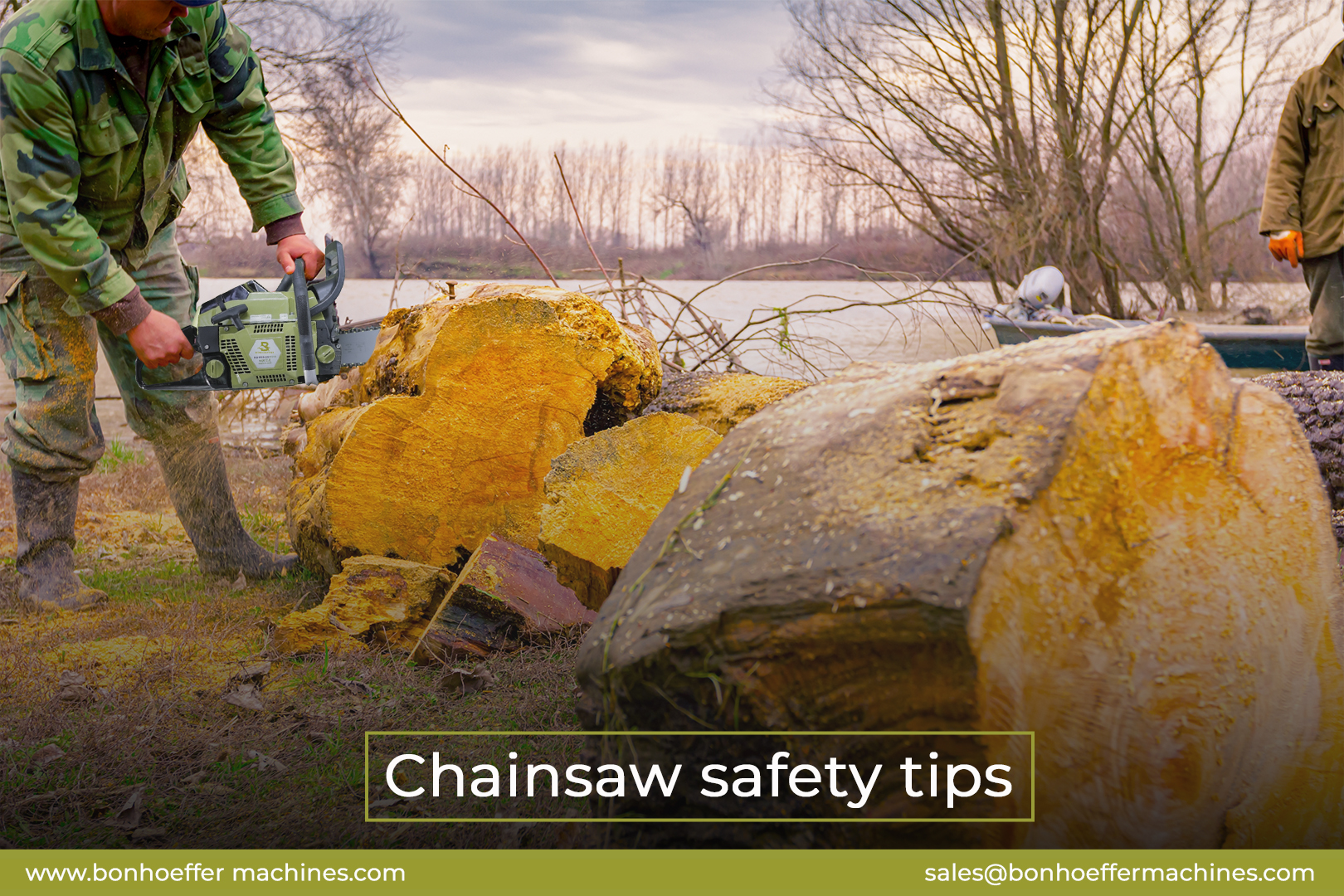
Chainsaws are powerful tools that make quick work of cutting tasks, from felling trees to trimming branches. However, they also pose significant risks if not used correctly. Whether you’re a professional logger or a DIY enthusiast, prioritizing safety is crucial. Here are some essential chainsaw safety tips to help you operate this tool responsibly.
1. Wear Proper Protective Gear
Before starting any task, equip yourself with the right personal protective equipment (PPE):
Helmet: Protects your head from falling branches and debris.
Safety Glasses or Goggles: Shields your eyes from wood chips and dust.
Hearing Protection: Chainsaws are loud, so earplugs or earmuffs are essential to prevent hearing damage.
Gloves: Choose cut-resistant gloves to maintain a secure grip and protect your hands.
Chaps or Cut-Resistant Pants: These protect your legs from accidental contact with the chainsaw blade.
Steel-Toed Boots: Ensure firm footing and protect your feet from falling objects.
2. Inspect the Chainsaw Before Use
A pre-use inspection can prevent accidents and equipment failure. Check the following:
Chain Tension: The chain should be snug but move freely.
Bar and Chain Condition: Ensure they are sharp and free of damage.
Fuel and Oil Levels: Fill the tank with the correct fuel mixture and check chain lubrication.
Safety Features: Confirm the chain brake, throttle lock, and stop switch are functioning properly.
3. Plan Your Work Area
Careful planning reduces risks:
Clear the Area: Remove obstacles, tripping hazards, and bystanders.
Identify Escape Routes: If felling trees, plan at least two escape paths opposite the direction of the fall.
Avoid Overhead Hazards: Be mindful of falling branches, especially when cutting at height.
4. Use Proper Starting Techniques
Start the chainsaw on a stable surface or with the saw firmly braced. Never drop-start a chainsaw—this can cause loss of control.
5. Maintain Proper Stance and Grip
Hold the chainsaw with both hands, keeping your left hand on the front handle and your right hand on the rear. Stand with your feet shoulder-width apart, slightly bent at the knees, for balance.
6. Avoid Kickback
Kickback occurs when the tip of the chainsaw bar contacts an object, causing the saw to jerk back toward the operator. To minimize kickback:
Use a chainsaw with a chain brake.
Avoid cutting with the bar’s upper tip.
Maintain a firm grip and proper posture.
7. Follow Safe Cutting Practices
Start Cuts Slowly: Avoid revving the chainsaw to full speed immediately.
Never Cut Above Shoulder Height: This reduces control and increases the risk of injury.
Be Mindful of the Chain’s Path: Ensure the chain doesn’t hit rocks, nails, or other hard objects.
8. Stop the Chainsaw Safely
Turn off the chainsaw and engage the chain brake before setting it down. Never leave a running chainsaw unattended. Bonhoeffer offers the premium range of Chainsaw.
9. Perform Regular Maintenance
A well-maintained chainsaw is safer and more efficient. Regularly clean the air filter, sharpen the chain, and check for loose parts.
10. Get Proper Training
If you’re new to chainsaw use, consider taking a safety course. Hands-on training can help you develop the skills needed to operate the tool safely.
Final Thoughts
Chainsaws are invaluable tools, but their power demands respect and caution. By following these safety tips, you can complete your tasks efficiently while minimizing risks. Remember, safety isn’t just a one-time effort—it’s an ongoing commitment every time you pick up your chainsaw.







